And I believe in/ expect/ hope for the resurrection of the dead !
That is damned hard to translate.
So I didn't go to church with my Bible, I went to the woods with my camera.
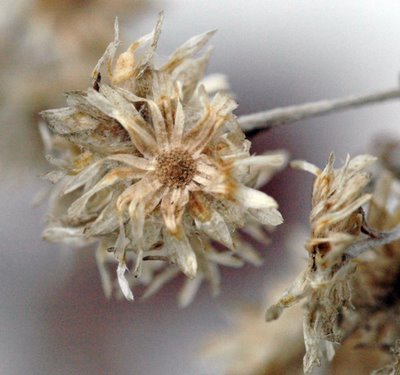
I'd been in the woods for an hour taking pictures and I was in paradise. It was a mild day, the snow cover was soft underfoot and Beaver Brook was bubbling merrily along. The sun was a glowing silver disc behind thin clouds, and the photography was going GREAT. Uncannily great, in fact. I had my favorite lens, the Tamron 90mm f/2.8 macro, and I was shooting aperture priority at some AMAZINGLY tiny f stops. f/22, f/32 in fact, and the shutter speeds that the camera was choosing were still blazingly fast. Man, just think of the depth of field I'd be getting ! With no motion artifact whatsoever !
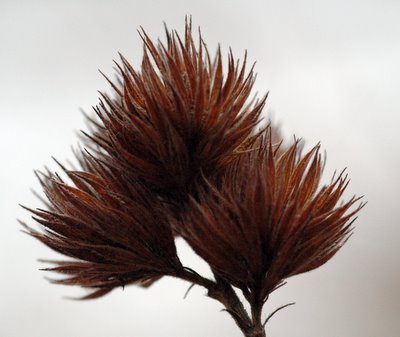
I peered at the meter readings: 1/4000 sec, 1/8000 sec ! It even began to tell me I was in overexposure territory !

Overexposed ? I'd never seen that before in aperture priority. What could it mean ? I looked around at the snow. I looked up at the silver glowing disc behind the thin clouds. I tried to remember what I'd read earlier that week in my new book "Understanding Exposure."

After some deliberation I concluded that a fortunate conjunction of sun, diffusing clouds and reflective snow must have produced a miraculously excellent light. I was, most likely, in some kind of rare exposure heaven. I pictured hosts of sparkling photons zipping about, bouncing off the snow, the trees, the water, the clouds, and making a brilliant beeline into my camera's miotic little pupil.

Having settled that, I slogged off through the snow, stopping to crouch and lean into weeds and pods, confident I'd get every plump detail, and not just the piddling, razor thin slices of focus that wider apertures like f/3.5 and f/5.6 created.
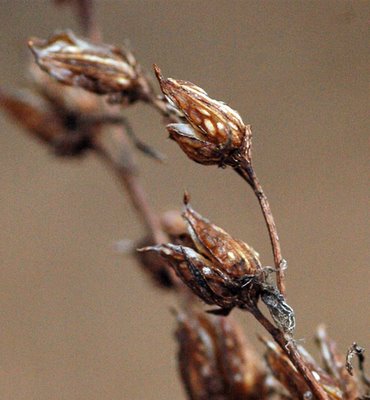
I would capture every overlapping scale on the catkins,
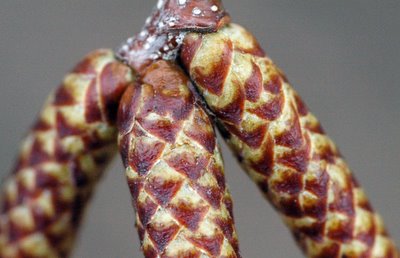
and I would capture three whole tansy florets with the denuded discs and stiff rays all in perfect focus.

I would capture the bristling fuzz of the brilliant yellow buds

and whole leaves, without curled edges melting into the universe of blur in front of and behind the narrow slice of focus.

And, as for the strange, hollow plants I'd photographed last fall on the embankment beside the railroad tracks -- this time I'd capture them in all their three-dimensional splendor --
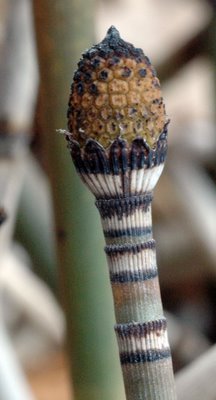
like the gorgeous, ruined Corinthian columns of a fallen mossy civilization !
And all without the messy inconvenience of a tripod.
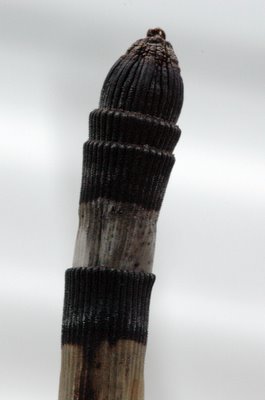
I was ecstatic, transported; I was singing hymns to the blessed, miraculous radiance ! Oh, as the prayerbook says, phos hilaron -- gracious light ! There must be a whole chapter in "Understanding Exposure" about snowlight, the best light -- I'd have to make sure to check that out later. Why, I bet even Ansel Adams must have written about it !
Later, anxious to see the brilliant, crisp images that the miraculous cloud-diffused snowlight had created, I downloaded the image files to my computer.
When I opened the first image, an oddly bright, in-focus but wierdly fuzzy aster, the exif data caught my eye. Yes, there it was, f/22. And, yes, there was the shutter speed, a respectable 1/500.
And then, to my dismay, I remembered what "Understanding Exposure" had said. What it had said right off the bat. Over and over and in bold print.
"A correct exposure is a simple combination of three important factors: aperture, shutter speed and ISO."
I'd shot each and every picture at ISO 1600.
And instead of reasoning it through -- remembering that making the camera eight times more sensitive to light than normal would allow faster shutter speeds and smaller apertures -- I concluded that I'd been blessed with some anomalous, even miraculous ambient luminosity.
I looked at my pictures. Yup, there was the fabulous depth of field. But there, also, was the fuzzy noise that shooting at high ISOs creates.
I was disappointed. I'd wanted to believe in the miraculous and beneficent cloud-diffused snowlight. In fact I had, in face of all reason and experience -- I knew about ISO and I'd photographed many a time in veiled winter light -- actually believed in it for a few blissful hours.
And it was as wonderful as faith must be wonderful.
No comments:
Post a Comment